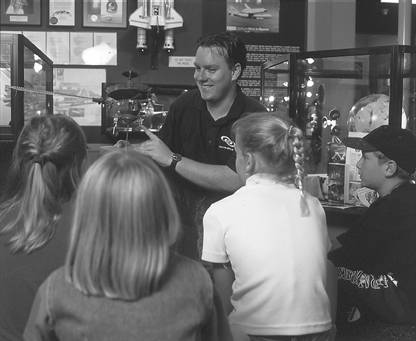Darren Osborne - science communicator
Somewhere out past Pluto, about 10 billion kilometres from Earth, there's a small spacecraft called Voyager 1. Its original mission, to photograph Jupiter and Saturn and beam information back to Earth, was finished in 1981.
As it journeys beyond the solar system, Voyager 1 will continue sending signals until it is finally out of radio range. One of the places where the craft's signals are still being detected is the Canberra Deep Space Communication Complex, at Tidbinbilla in the ACT.
In 1964, five years before astronaut Neil Armstrong first set foot on the moon, NASA established the Complex as an engineering facility to help communicate with spacecraft travelling to the planets. The Complex staff maintain a sophisticated array of radio antennas and develop new techniques for radio communication.
I am responsible for the Complex's public relations program, explaining its work to the 400 school groups and 70,000 other people who visit us each year. It's quite a challenge because the work is very technical and I have to avoid using jargon or technical concepts my audiences might not understand.
For example, when I talk about the weakness of the Voyager 1 radio signal, if I said that it was one billionth of one billionth of a watt, most people wouldn't appreciate what I meant. A better way is to say it is as weak as my voice would sound if you were sitting in the Complex lecture theatre at Tidbinbilla trying to hear me talking in Sydney.
My qualifications include a degree in physics and statistics and a Diploma of Science Communication. As part of the diploma course, I had a lot of fun travelling around Australia with the Questacon Science Circus, performing science shows for school audiences.

This work is reproduced from the Women in Science Enquiry Network
PO Box 647 Glebe 2037,
http://www.usyd.edu.au/wisenet
"Science Futures" was produced by Wisenet with the aid of a grant from the Department of Industry, Science and Tourism Science and Technology Awareness Program.